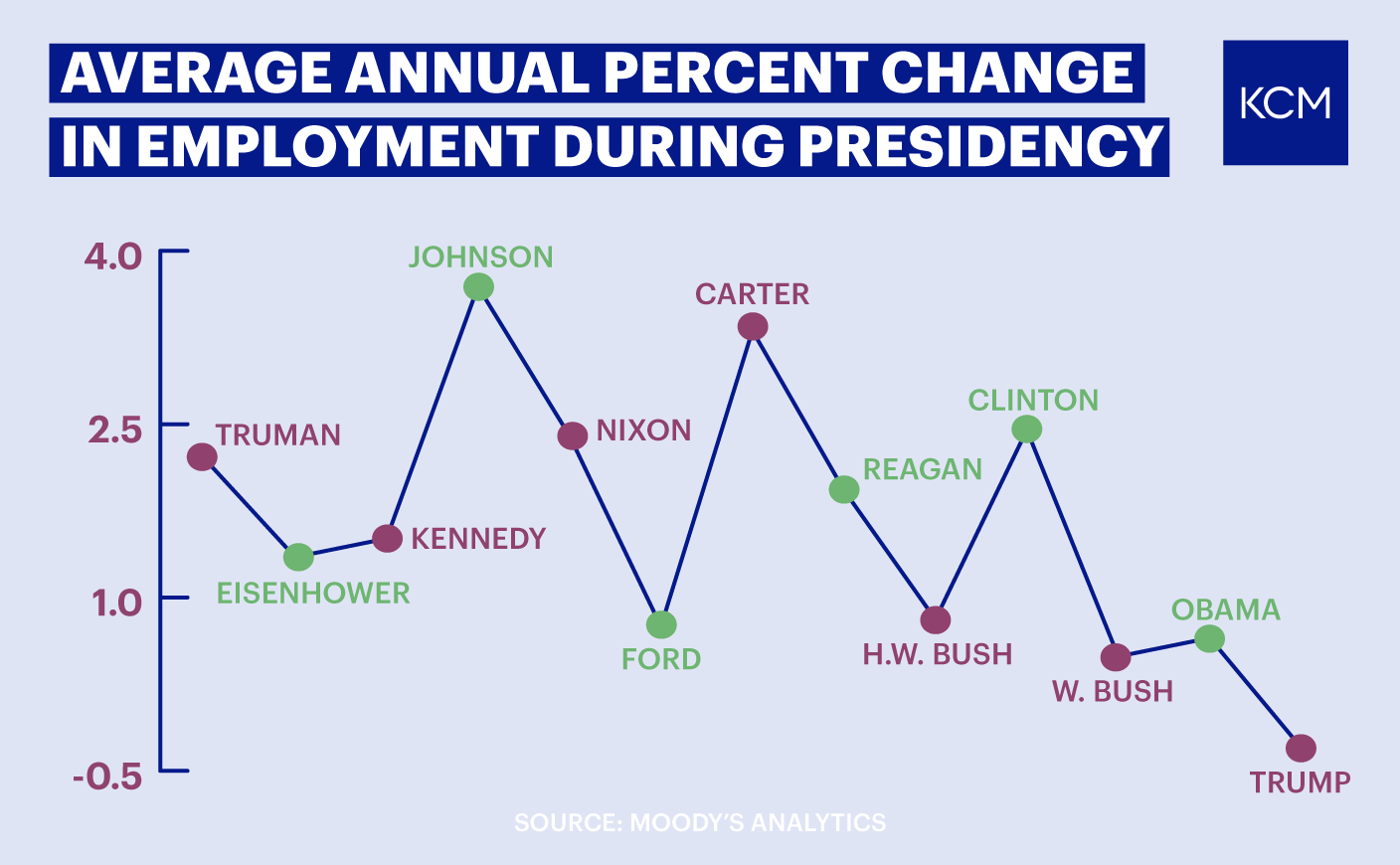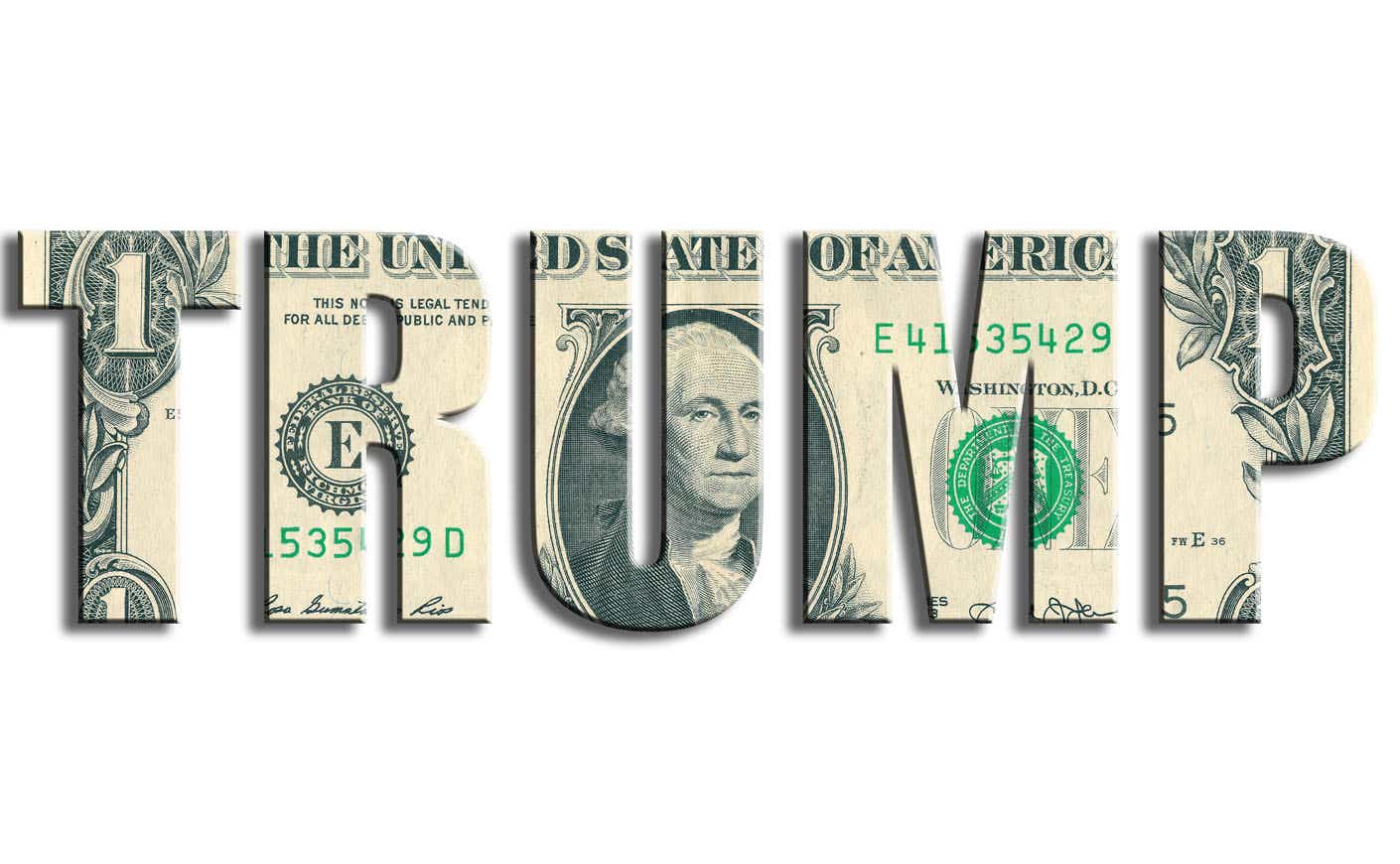Two economists give their insights on how the economy actually fared during Trump’s tenure
During his term, President Donald Trump has made some bold claims about his record on the economy. He’s boasted about job creation, a surging stock market and claimed that he had “built the greatest economy in the history of the world.”
As his time in the White House winds down, KCM turned to economists to separate fact from fiction: How did the economy really fare under the 45th president?
The results are mixed.
Mark Zandi, the chief economist of Moody’s Analytics, told KCM the economy under Trump has “been a disaster.”
“Unemployment is high, underemployment is very high, GDP has been weak and the deficit has ballooned,” Zandi said.
In April, as the pandemic gripped the country, the U.S. lost 20.5 million jobs, unemployment soared to 14.7% and the U.S. saw a historic decline in GDP. He also noted that Trump will be the only commander-in-chief to end his tenure by leaving the country with fewer jobs than when he took office.
According to data compiled by Moody’s, Trump ranked last among presidents dating back to President Harry S. Truman on the average annual percent change in employment (-0.3%) and GDP (0.9%) over the course of his term. He did rank second behind President Bill Clinton (15.87%) for the S&P 500’s average performance while he was in office (14.34%).

Granted, Zandi said, the president can’t be blamed for the pandemic, but he should be faulted for how he managed the crisis. His administration’s “botched response” will mean an economic recovery is still far off and will be a lot more costly, compared to some Asian nations, which locked down early, better controlled the spread of Covid-19 and have been able to more quickly open their economies back up, Zandi said.
Pre-Covid Performance
To get a sense of how the economy performed under Trump before the pandemic, Paul Sheard, a research fellow at Harvard Kennedy School and a former vice chairman at S&P Global, pointed to the GDP from 2017 through 2019. Under Trump, annualized growth averaged 2.5%. That’s slightly higher than the 2.4% recorded in the prior three years under President Barack Obama, according to Sheard.
Taking the pandemic out of the equation, Zandi believes the economy under Trump still would have been “subpar.” The low unemployment rate and rise in wages Trump touted before the crisis is largely a legacy of the Obama presidency, he said. But entering 2020, the president’s failed trade war was beginning to weigh on the economy, Zandi said.
“Overall, the economy was pretty pedestrian,” he said.
One bright spot for Trump, both economists agreed, September 2019 when the unemployment rate fell to 3.5% — a 50-year low.
“There was not an economist in America that expected that,” Sheard said.
The Federal Reserve in 2016, forecasted that by the end of 2019, unemployment would come down modestly (to 4.5%) from the 4.7% when President Obama left office. It was “remarkable” and a shock to everyone, Sheard said.
Trump’s Legacy
When thinking about what mark President Trump leaves on the country’s economic policy, both Sheard and Zandi pointed to how he’s shaped our relationship with China.
Trump, for the most part, shares a traditional Republican perspective on the economy, as a believer in deregulation and trickle-down theory. But where he diverges from the party is “being tough on trade and tough on China,” Sheard said.
The tariffs he imposed on about $360 billion of imports from China (log-in needed) and the sanctions on Chinese technology companies helped “the pendulum swing away from free trade and globalization” and is a policy that Sheard believes will live on.
“Trump appropriately recognized that more had to be done to confront China,” Zandi said. “I’d give him credit for that.”
Written and reported by Rachel Uda.









